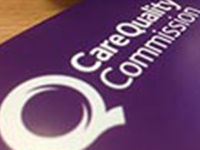Use of Artificial Intelligence (AI) software in General Practice
GPC have provided a brief note focusing on the use of artificial intelligence in general practice. They have developed this brief note ahead of more substantial guidance aimed at supporting practices to meet their regulatory obligations.
We recognise the importance evolving technologies can play in our day-to-day work, and with the recent availability of AI software tools being able to interface with our clinical systems, this has never been more apparent.
However, we feel it is important to make it clear that there are risks associated with the use of technologies, especially if they are to be considered medical devices, and appropriate regulatory approval must be in place before clinical use occurs. It is important to have absolute
clarity around the use of confidential patient data, where it is transferred, when being processed, and where it may later be stored, and if it is made available for secondary purposes.
We must maintain our patients’ trust in us as GPs and so must take the utmost care in the processing of their medical data.
There are also obligations on suppliers and practices to comply with the Health and Social Care Act 2012, with regard to the application of standards such as DCB0129 and DCB0160. Data protection legislation must also be complied with by practices and Data Protection Impact
Assessments (DPIAs) constructed before any processing that is considered ‘high risk’ occurs. (https://ico.org.uk/for-organisations/uk-gdpr-guidance-and-resources/accountability-and-governance/data-protection-impact-assessments-dpias/when-do-we-need-to-do-a-dpia/).
Practices should ensure they have appropriate indemnity. For technologies that are medical devices the Yellow Card Reporting System (https://yellowcard.mhra.gov.uk/) should be used if the outputs of an AI technology adversely affect the diagnosis or treatment of a patient. NHS
England published advice on the use of AI scribes earlier this week (https://www.england.nhs.uk/publication/guidance-on-the-use-of-ai-enabled-ambient-scribing-products/) which we would recommend you review.
In summary, practices, as data controllers, need to understand the risks they may be taking on if using such AI technologies, particularly at this early stage when the regulatory landscape is in a state of flux.
In the coming months we will be working with external bodies to ensure any necessary regulation occurs at a national level and that GPs have the protections they require if these tools are to be adopted more widely, ensuring at all times that patients maintain their high
level of trust in their GP.
We will also be publishing more detailed guidance to inform and support practices to utilise AI driven software the in the delivery of care
Guidance on the use of AI-enabled ambient scribing products in health and care settings
Please find below a summary of a key document.
Overview
This document, published by NHS England on 27th April, provides guidance on the deployment of AI-enabled ambient scribing products including advanced ambient voice technologies (AVTs) used for clinical or patient documentation and workflow support in health and care settings. It is of relevance to GPs aiming to implement a specific product. This is the first in a series of documents to be published over the next six months. An AI Ambassadors network will be established to support best practice and sharing of insights.
What are AI-enabled Ambient Scribing Products?
These are speech recognition and natural language processing (NLP) systems that:
- Record and transcribe conversations between clinicians and patients during consultations.
- Use AI algorithms to generate structured clinical notes, such as SNOMED-coded entries.
- Can auto-populate sections of the patient record, with clinician approval.
- Can generate outputs in the form of medical letters or other documentation.
- Can recommend actions such as onward referral.
Some tools include features such as:
- Automatic summarisation of discussions based on text transcripts.
- Intelligent prompts for missing clinical information.
- Real-time transcription during the consultation.




